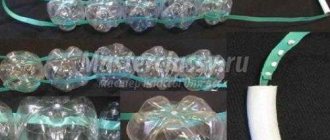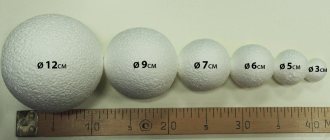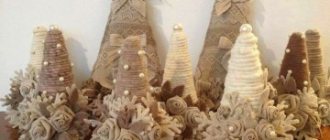Product details
As a rule, only one element in a scanner or laser printer becomes unusable, while the rest of the parts are quite usable. The most valuable in this sense are MFPs and matrix devices. When disassembling the latter with your own hands, you can get a lot of valuable parts.
Old printer
- Fasteners - screws, nuts, gears, bolts and other small items. For the home craftsman, any fastener is useful, since sometimes the lack of elements of the required diameter makes work very difficult.
- The most valuable part in any type of printer is the guide, made of hardened steel. In many Chinese and Korean devices, the guide is made of cheap alloy and bends even under the weight of the drive belt. Inkjet devices from Canon or Epson use steel. This part is used in the construction of CNC machines or homemade printing devices.
- The head sliding unit - in inkjet devices it is plastic and is only suitable for CNC engravers, but in matrix engravers a bronze bushing is pressed into the unit, so the part can be used on metalworking home machines.
- If you intend to install a printing device, a Canon cartridge is the best option.
Cartridge from Canon
- A toothed drive belt is a universal element suitable for any device where it is necessary to transmit force from a stepper motor to a platform. And the belt sliding assembly can be found in MFPs and scanners and even old copiers from Epson.
- Stepper motor – provides the movement of the paper. On older dot matrix and laser devices they are more powerful, however, and the parts of inkjet printers can be used effectively. In addition, the engine along with the controller and driver can be removed from the old machine.
- Limit switches – provide control over paper quality. A necessary part for a homemade printing device or machine.
Limit switches
New life for an old scanner
Does your scanner not work with the latest version of the operating system? Don’t rush to the store for a new one: CHIP will offer a universal free solution for any device.
CHIP will tell you how to use the VueScan program to use an outdated scanner to work with a new OS. Problems with using outdated scanners are often associated with the lack of the latest versions of the corresponding drivers, both in Windows and from manufacturers. However, in most cases the resolution and quality of such devices is still quite acceptable. Of course, you can create a second virtual OS and run scans from there, but VueScan offers a more practical solution. A free basic version of this software with limited functionality allows you to bring your old scanner back into service for use when needed. Moreover, even the standard and professional versions of this utility costing about 1200 and 2500 rubles, respectively, with additional professional capabilities, such as calibration, will cost you less than a new scanner from a well-known brand.
In any case, it's worth a try. First, make sure that the VueScan app supports your scanner model. You will find a list of devices on the program website (short link: b23.ru/hc4t). The model-specific page contains information about supported features and functions. There's even a link to download the latest version of the program. Since there are often minor fixes, we recommend downloading VueScan directly from hamrick.com/#download. The difference in versions will be noticeable later, depending on whether you have a license key. You can purchase the program at any time, but all the actions described below are available in the basic version.
VueScan will automatically detect a running scanner and use the available driver. If the device is not yet functioning, press the “Win+Pause” key combination and launch Device Manager. In it, find your scanner in the “Imaging Devices” category. Right-click on it and run the Update Drivers command. Now you need to select the “Browse for driver software on this computer” option. Set the location to “C:VueScan” and click “Next”. You can even replace the driver this way: first remove the old one, restart Windows and connect the VueScan driver.
In steps 2 and 3 in the step-by-step guide below, you'll see how easy and fast it is to scan in VueScan using your customized workflow. The generated files of decent quality will not contain watermarks. In addition, the program will allow you to select the resolution of the scanned image, the type (extension) of the saved file, and also set the white balance in advance. You can also manually adjust colors by checking them in detail on the histogram curves and immediately improve color reproduction. In addition, you can later adjust the brightness, contrast and colors in the graphics editor.
How to do it?
1 NEW DRIVER
VueScan works with thousands of even outdated scanner models, using its own drivers if necessary, and allows you to get results in a few clicks thanks to standard options. The program interface is completely localized.
2 QUICK START
Select “Scan to File” in the “Task” item, set the “Media” - for example, “Image” - and the scan quality (the “Editing” and “Archive” types are the highest quality). The "Print Quality" option will result in JPEG files, while the "Editing Quality" option will result in TIFF images.
3 FLEXIBLE CRAMING
In Playback mode, you can set the frame to Auto using multiple default formats or manually using User Set on the Crop tab.
4 ADVANCED CUSTOMIZATION OPTIONS
Click the “More” button in the bottom menu. You will be presented with additional scanning configuration options.
5 “OUTPUT” TAB
» Here you choose the save location, file type (such as TIFF, PDF, text OCR or RAW), and additional saving options. The OCR file works even in the basic version of the program.
6 COLOR SETTING
In the Color tab, you can change the Color Balance from White Balance to Incandescent or Fluorescent. When optimizing, the black point, white point, curve and brightness settings will help, which you will see by clicking the “More” button.
7 WORKING WITH CURVES
From the Image menu, select Image Graph to view an analysis of the image and the impact of your changes. This is very useful for fine tuning.
8 WIRELESS CONNECTION
Network scanner owners can use the VueScan Mobile app to scan images directly to their iPad or iPhone. The commercial version of the desktop program offers even more settings and format options, as well as the ability to directly send results via email.
What can be done from an old printer
An old printer can be modified and used for several other purposes. In this case, you will also need ingenuity and skill, but the result is sometimes very interesting.
What can be done from a Canon or Epson device, and judging by the reviews, this is the most suitable line of MFPs and scanners for modification? Device for printing on thick materials. The basis is most often an old inkjet printer.
Inkjet old printer
- Remove the front tray, input tray, side panels and housing. Remove the paper feed sensor but keep it.
- Remove the pressure and central roller, as well as the head cleaning mechanism.
- The platform with the head can only be removed by cutting it using a hand grinder. For such work you need to wear protective goggles and a respirator.
- The print head is cleaned.
- Then washers and nuts are used to adjust the required gap width. Most often, an old printer is used for printing on textolites, thin sheets of plywood and similar materials. The head cleaning mechanism is then installed on the corners.
- The material supply sensor is a photosensor with an emitting diode. For it and the feeding system, a platform of appropriate size is cut out of plywood. Aluminum corners are mounted as guides for the PCB. The feed sheet is also made of aluminum.
Assembling the machine
Use a printer as the basis of the machine—a matrix device is an excellent option. The motors from such office equipment can be installed absolutely independently; moreover, they are durable and low-noise. In addition, get all the necessary tools and small parts in the form of screws, bearings, aluminum corners, bolts and construction studs. The tools you will need are side cutters, a file, a vice, an electric drill, pliers, a screwdriver and a hacksaw.
Overall, as you can see, an old printer can be an excellent basis for making a CNC machine. Of course, if your skill and skills to create such equipment are not enough, then it is better to disassemble the old device into components that you may need in the future to repair a new printer.
The cartridge is filled with special ink.
The photo shows a modified old printer.
Wind generator from an electric motor
What else can you do with your old printer? A wind generator that converts wind power into electricity. Such a device may well provide for household needs. In essence, this is not the use of the entire device, but only parts. Stepper motors from a laser device or MFP are preferable.
Printer motor
- The old printer is disassembled to remove the stepper motor.
- Assemble the rectifier: 2 diodes are required for each of the 4 phases.
- The blades are made from PVC pipe - this makes it easier to select the desired degree of curvature.
- The bushing with slate is machined to the size of the shaft.
- The sleeve is placed on the shaft, secured, and the blades are fixed to the flange. It is important to balance the composition.
- The motor is inserted into a piece of pipe where it is secured with bolts. A duralumin weather vane is fixed to the pipe from the end. The entire structure is supported by a vertical pipe.
The video demonstrates how to assemble a wind generator with your own hands.











